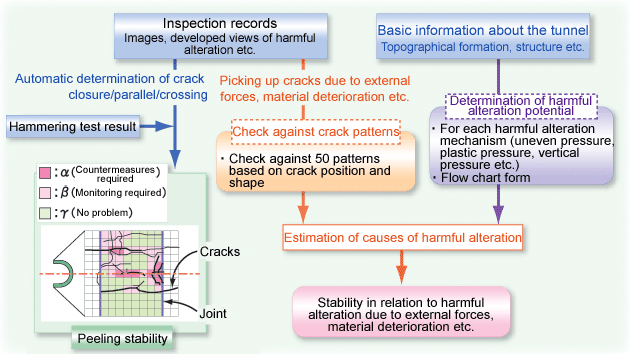| 6. Tunnel Stability Diagnosis System Applied for General Inspection | |
|
The reliance of tunnel inspection on manpower gives rise to problems such as the enormous amounts of effort and time required, as well as inconsistencies in individual judgment. To tackle these issues, new technologies have been developed to store inspection data electronically in a database, but currently most of the work to determine the stability of tunnels is still done manually. In this study, a prototype system was developed to automatically diagnose the stability in relation to peeling and harmful alteration caused by external forces, material deterioration etc. The diagnosis was made from inspection records such as images from tunnel inspections, developed views of electronic forms of harmful alteration, and basic tunnel information (Fig.1). For development of the system, an algorithm to automatically extract harmful alteration locations and estimate the causes of harmful alteration was constructed. This was done by creating crack patterns based on the results of the Railway Technical Research Institute's tunnel model load experiments and data on deformed tunnels, and checking them against tunnel conditions. This system provides the advantages of labor savings in performing general inspections and higher precision for analysis of harmful alteration. In addition, the latest inspection technologies (such as hammering test equipment and harmful alteration-monitoring systems using optical fiber) can be added to the system.  Fig.1 Schematic diagram of the tunnel stability diagnosis system |